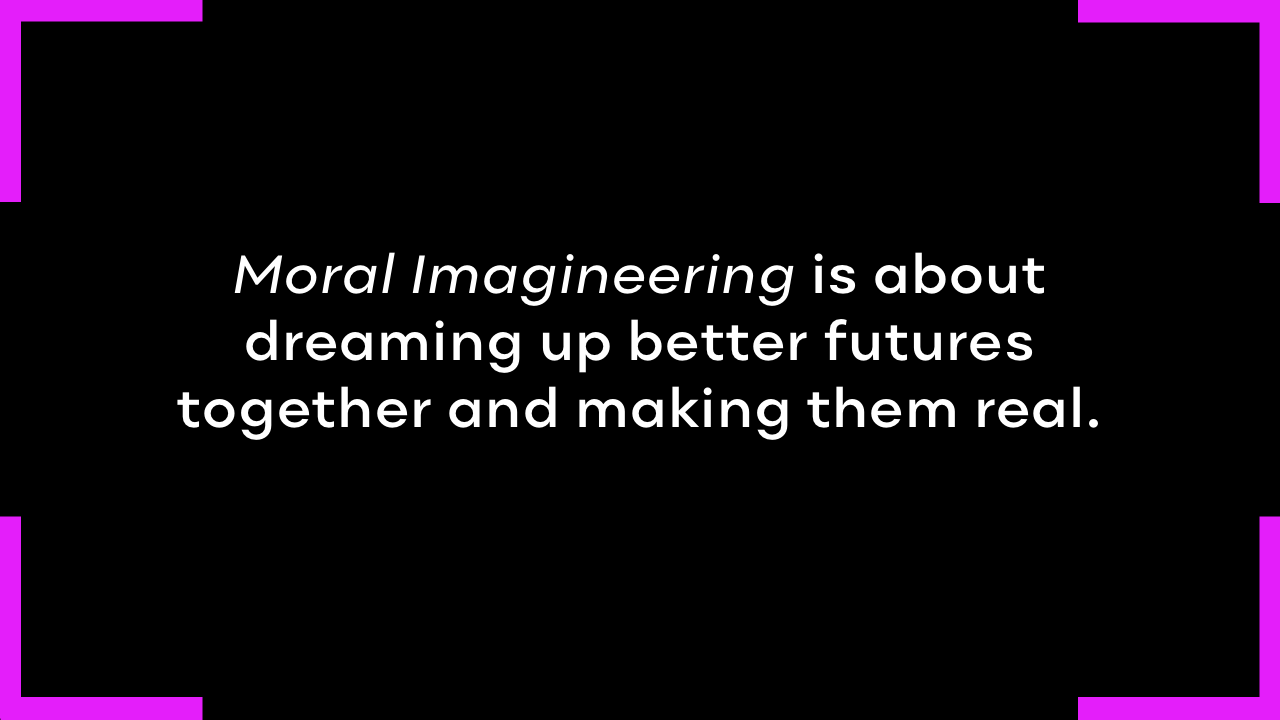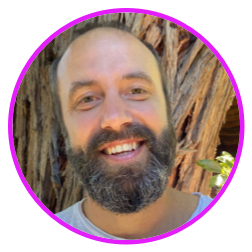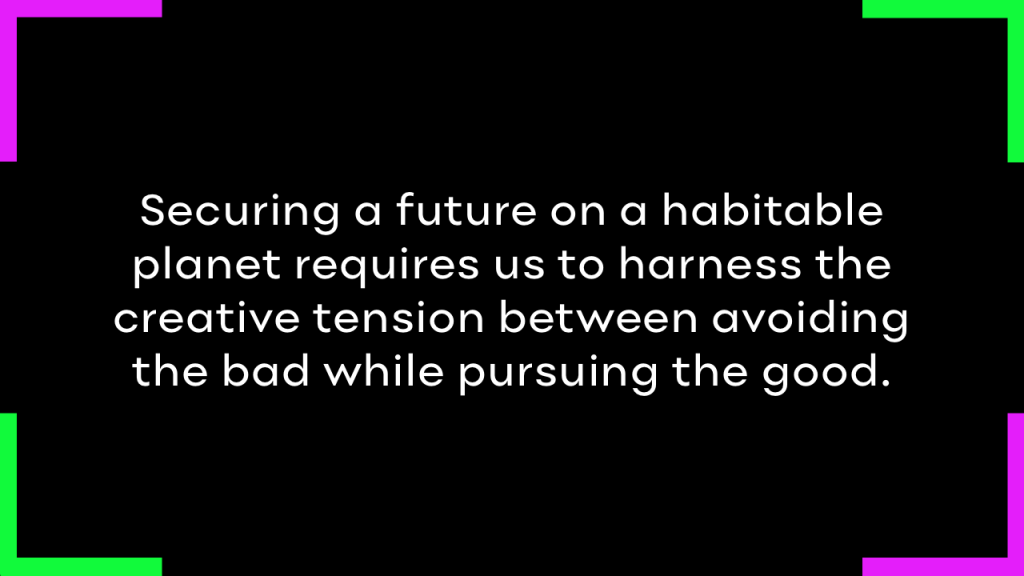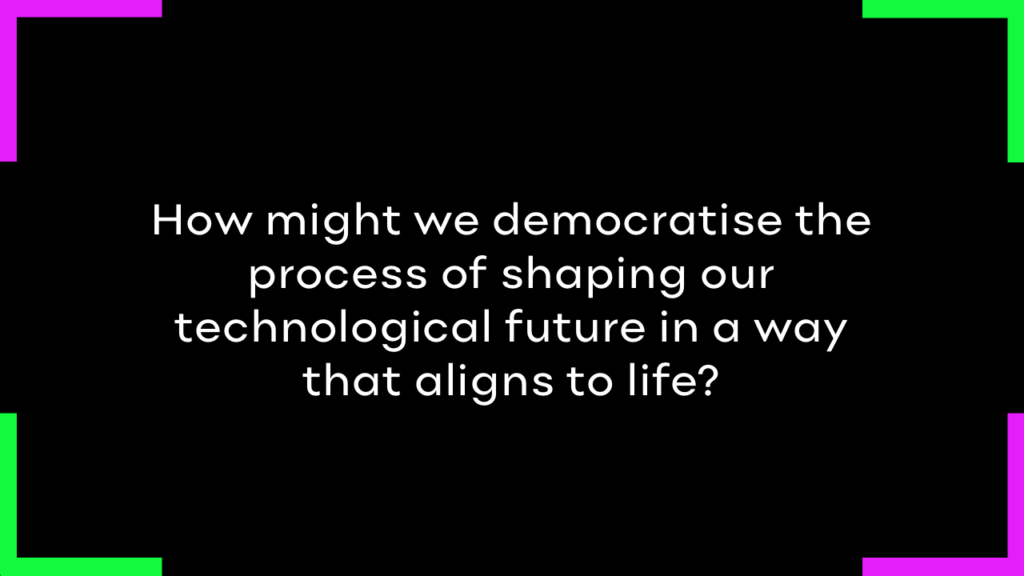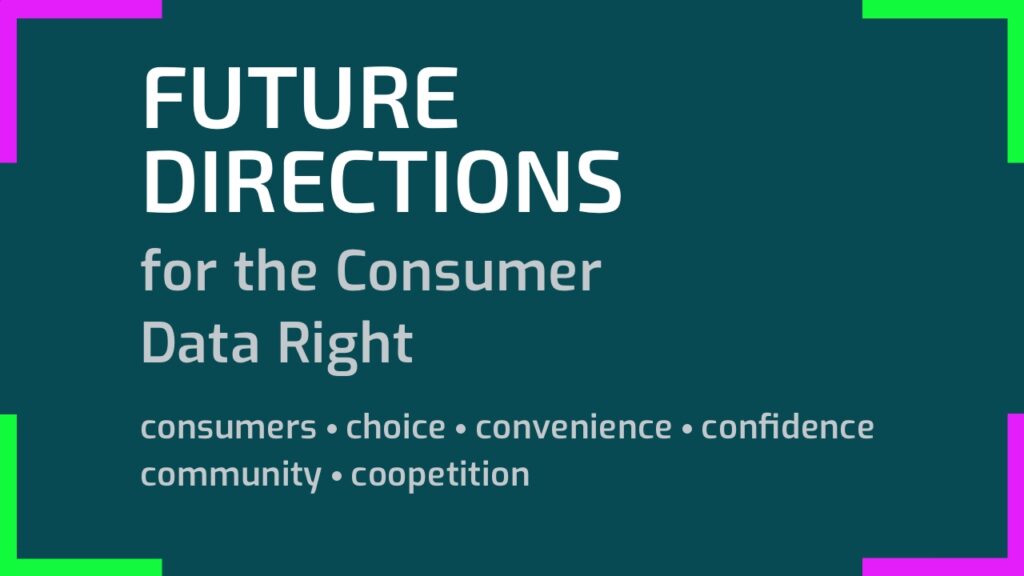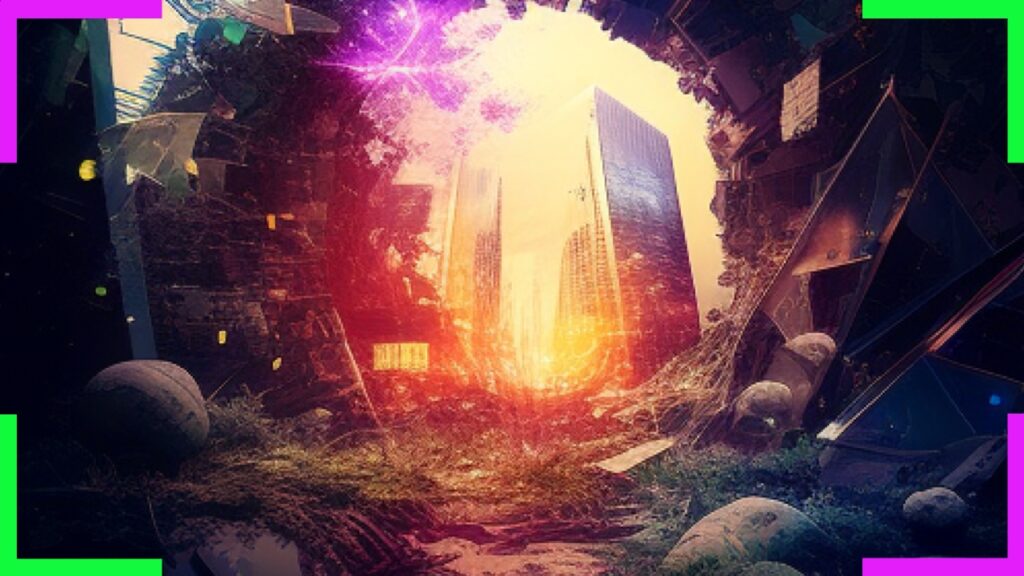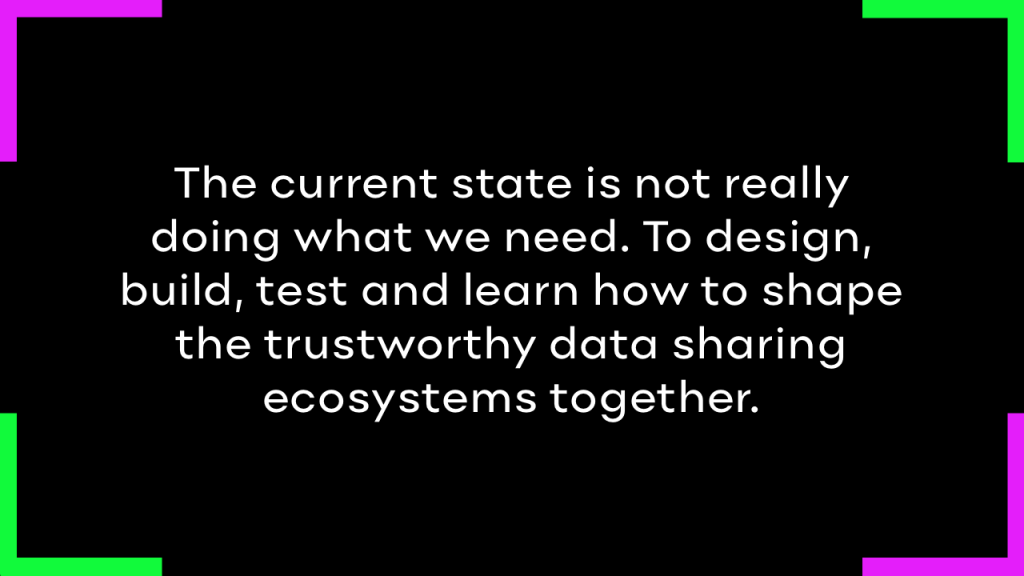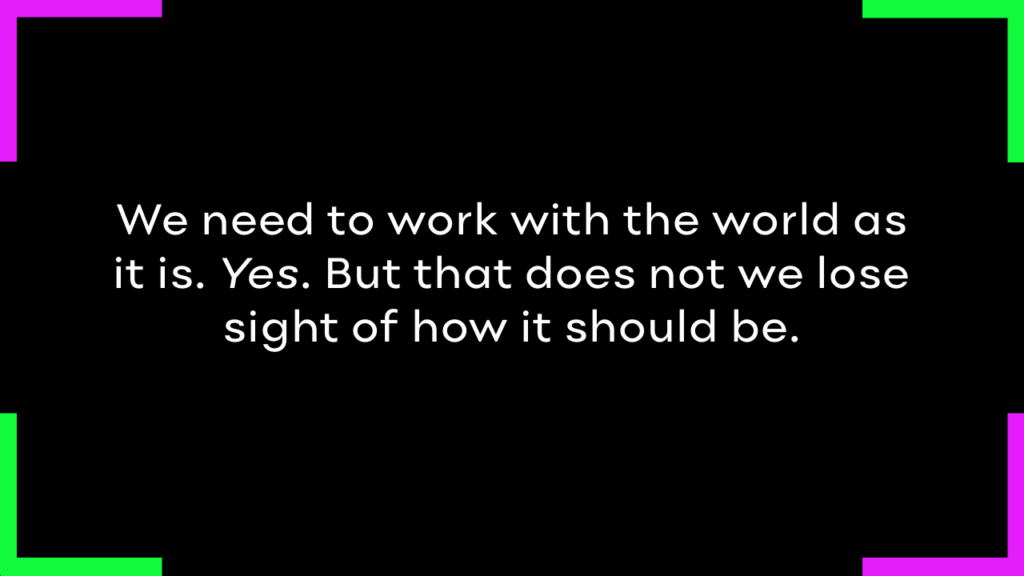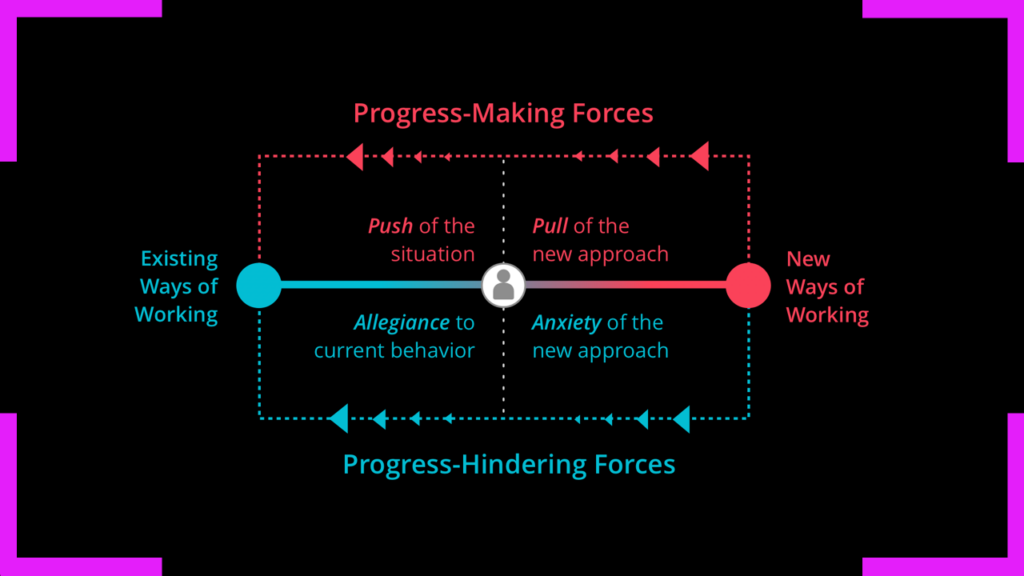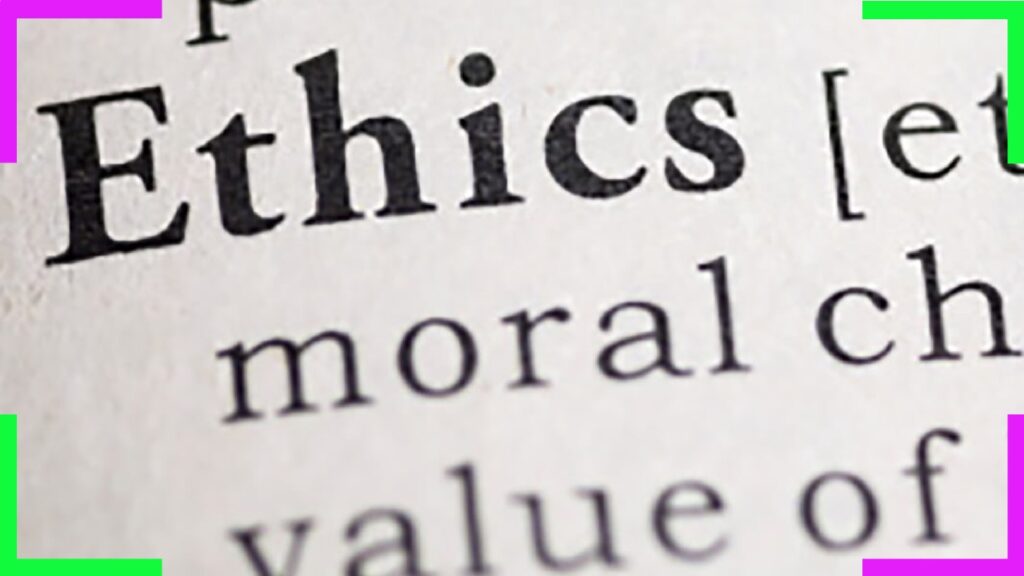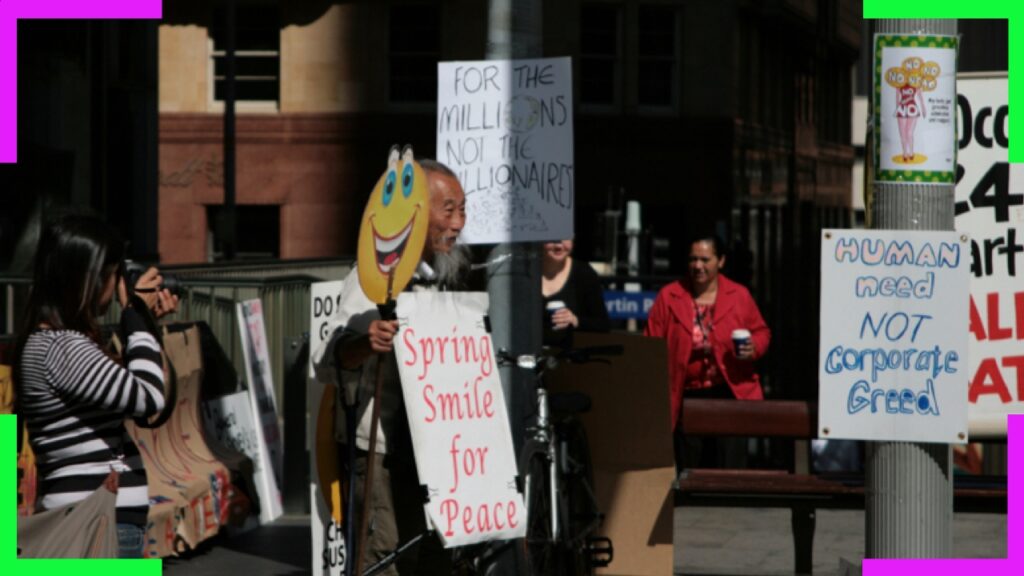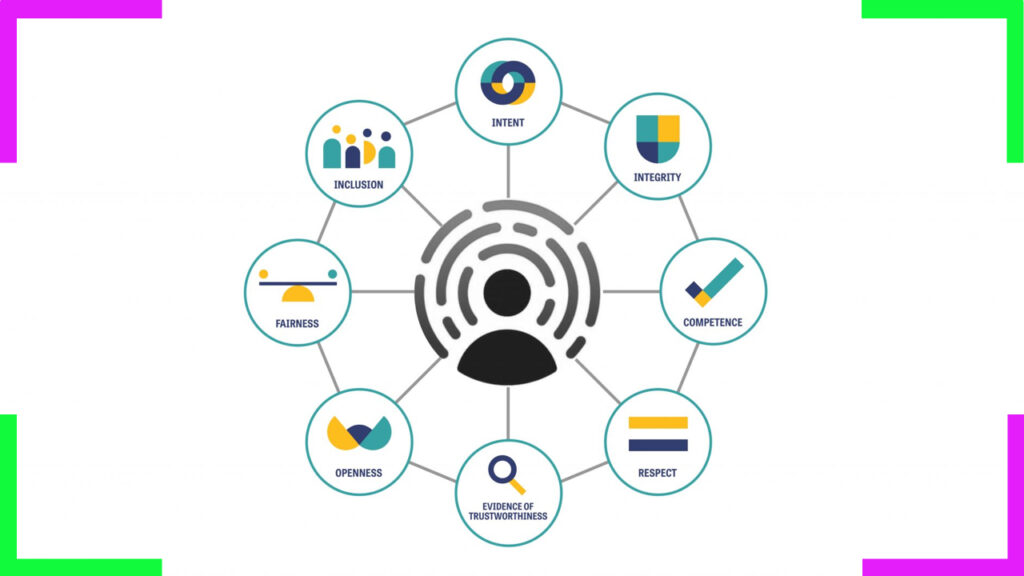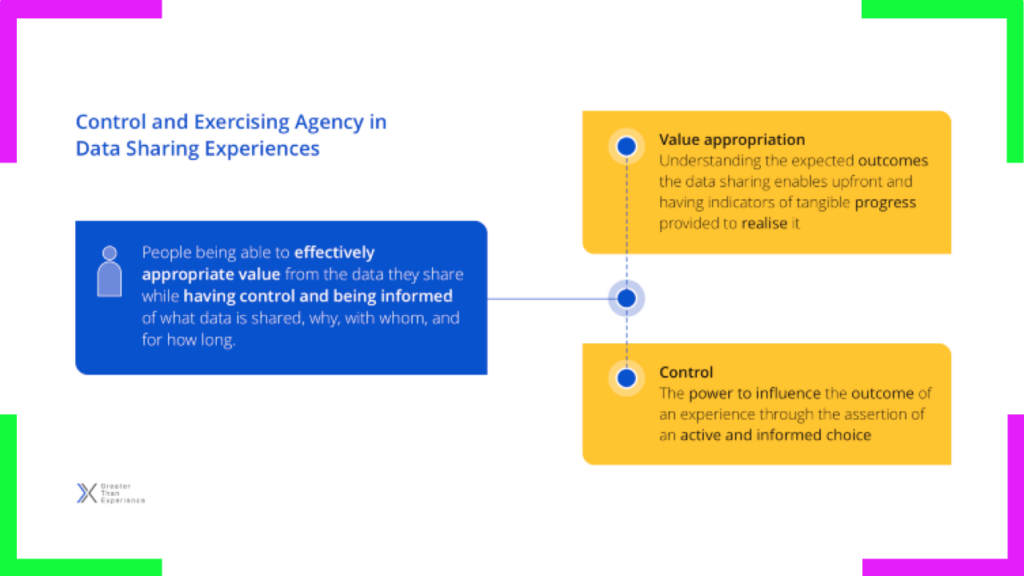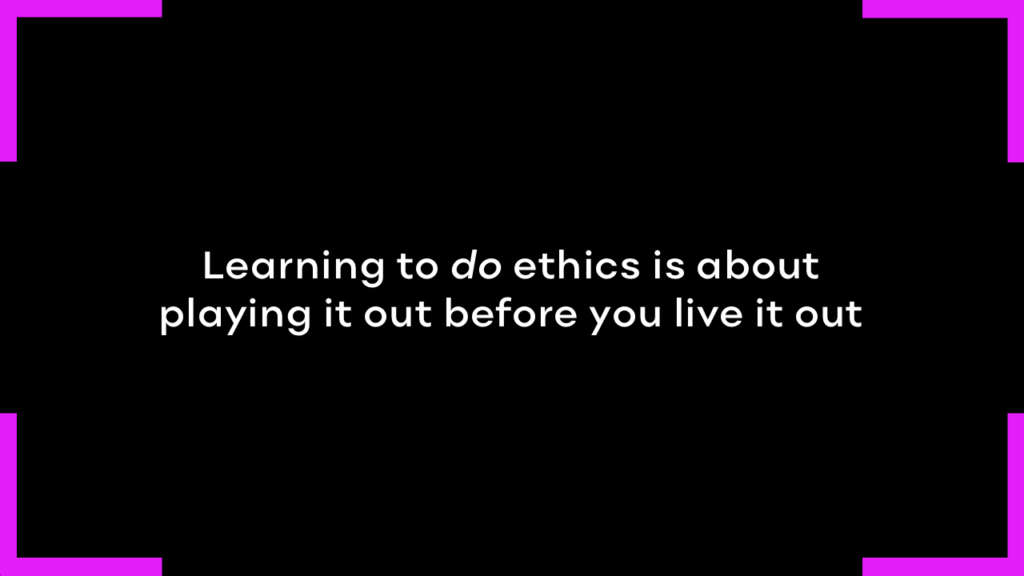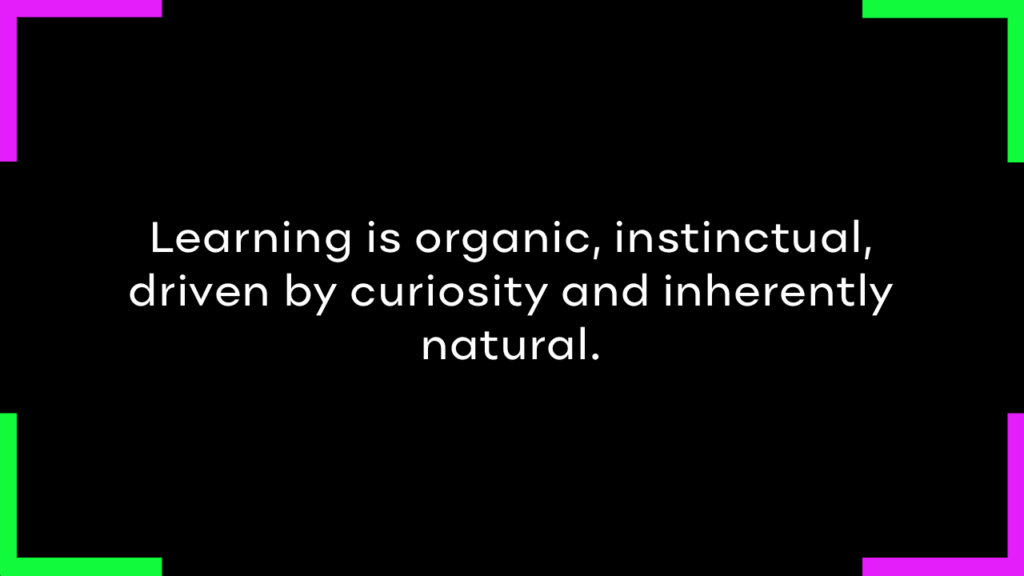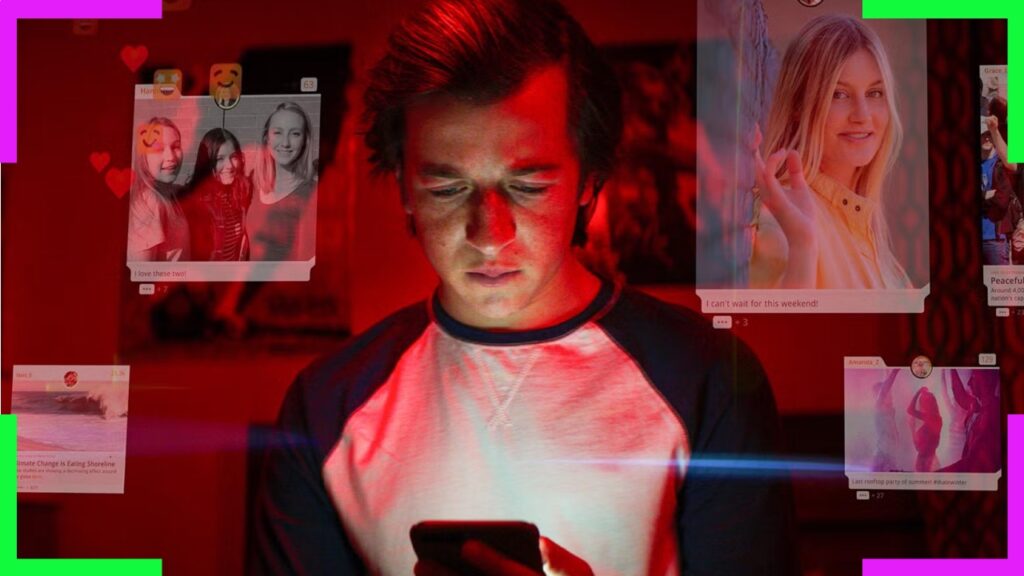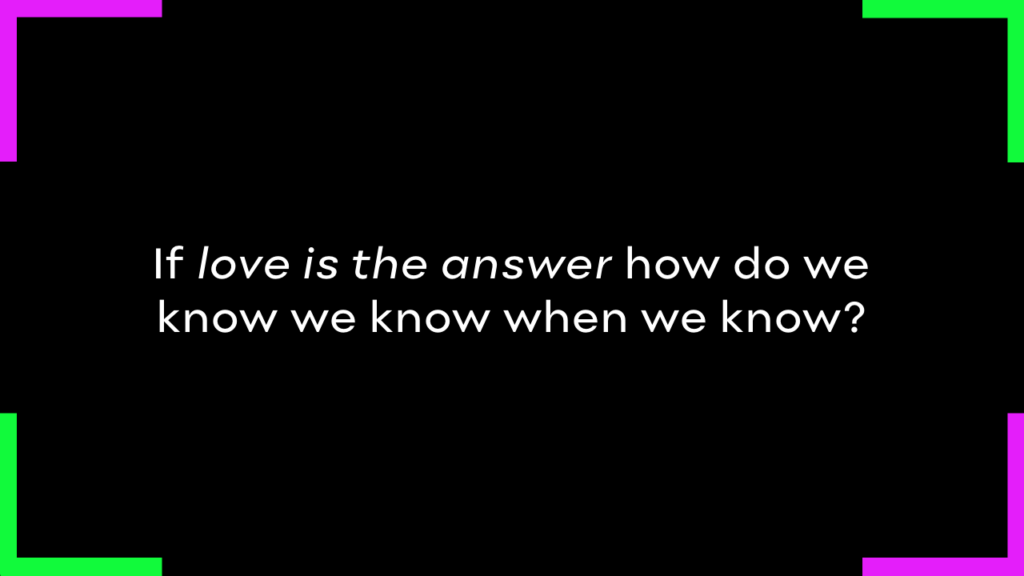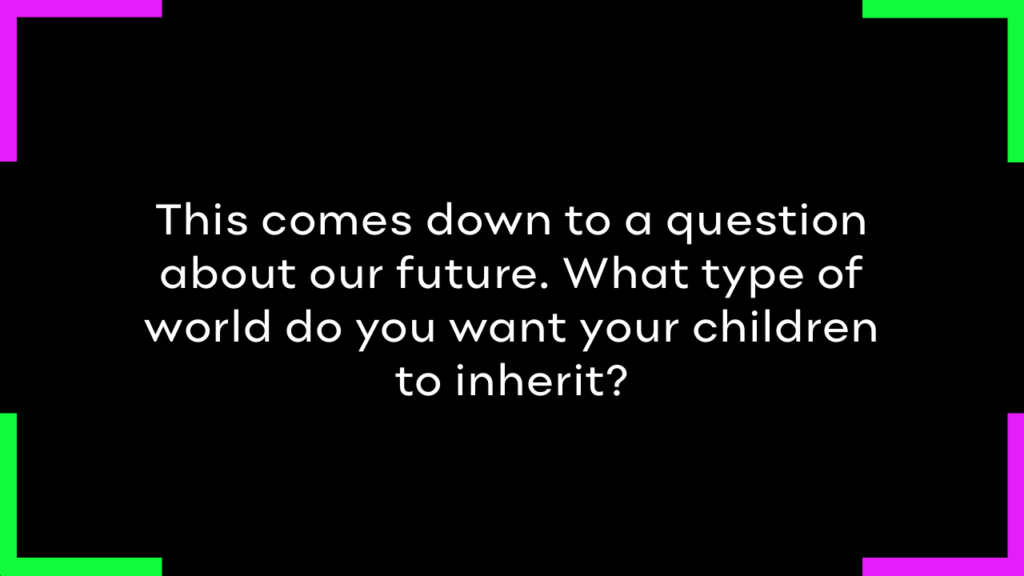Every morning when I open my eyes I recognise and silently acknowledge 3 things I’m grateful for.
This might be as simple as the fact I have a bed to sleep in. Maybe my son, daughter or wife being in my life who might be sleeping next to me, people that inspire and support me, the harvest from our little garden that nourishes my vessel, or the sun shining through the window for its life giving energy.
These simple acknowledgments of gratitude are wonderful reinforcements for life satisfaction. Research on daily gratitude practices and rituals is well documented. For me, they’ve helped me to get out of bed when the darkest of clouds hide the light. They’ve helped ground me and calm my energy when I’m a bit wired. My being still vibrating from being immersed in some complex problem till dawn while everyone slept.
Rituals like these that I’ve cultivated for many years have literally been a life saver.
Why, because I’ve got a secret I’ve never shared publicly, until now.
So I’m coming out.
25 years ago I was diagnosed with bipolar disorder. It was a diagnosis I struggled to accept for many years. Particularly with all the stigma associated with a having a mental “illness”.
Being medicated during my twenties was a tough pill to swallow of the many I was prescribed.
I’ve had a few bouts of mania and many periods of severe depression over the course of my adult life. This has been hard for many to relate to.
Now most people experience depression and periods of deep sadness in their lifetime so it is more easy to empathise, along with being more socially accepted to even talk about it now.
Here where I live in Australia 1 in 6 people will experience a major depressive episode in their lives.
Severe depression is debilitating. The dark holes that can last weeks or months. With simple activities, like getting out of bed, eating, taking the kids to school, cleaning, holding a job, maintaining social relationships etc requiring extraordinary amounts of energy and determination.
The opposite end of the spectrum is harder to relate to.
Extreme elation and feelings of deep meaning and extraordinary insight. Sleeplessness and obsession on details and visions that come like wakeful dreams. This is the hypomania. It’s not as severe as the full blown mania. But can still be destructive if not understood and managed by yourself and those around you.
This experience has made me feel alone in the world. Most cannot empathise. I’ve even had people say things like “wow, that sounds awesome, you could be so productive when you’re like that” or “that seems to be like a super power”.
I get it. Sometimes I wish I could channel it to be “productive” or switch ‘hypomania’ on to do the astonishing work I’ve been capable of in these periods of my life. But it ain’t that simple.
The mania is at the extreme end of the spectrum and is impossible for anyone but those with direct experience of it to truly empathise with. It brings with it delusion and grandiose visions of your role in the world and universe. Extreme agitation, paranoia, impatience and a myopic focus. It can be destructive and explosively creative at the same time.
I’ve luckily only had 1 period of this in the past 20 years.
I was fortunate to have found mindfulness in my mid twenties while doing psychotherapy. It was how I got off the numbing medications that I felt took m3 away from me. But it also meant I needed to develop some mastery around habits and create structure and ritualise grounding techniques. I needed methods to learn my triggers and monitor and be aware of my changing mood. To learn and develop techniques to manage without taking pills everyday.
Note: I am not condoning people diagnosed with bipolar stop medication.
Sure, I had hiccups. I had times that I went “off the rails”. I had times depression got to the point of ropes meticulously setup to end the pain and anguish. But I’m glad I got through it and I’m still here.
In many ways the pain and anguish, the sense of helplessness and hopelessness comes from real problems in our world that I sensed as a child and have become acutely aware of as my curious mind drove me to learn more over the pas few decades.
I’ve had times where my mood swings have created instability for my love ones, family and colleagues. But I also learned to mask it. To wear masks while I managed. To control my sometimes extremely turbulent and powerful energy I was attempting to contain inside my vessel.
I don’t see that changing. We all need to wear masks to function. Just pause for a moment, take a deep breath, reflect and you’ll feel it.
We all wear masks.
To fit as a cogs in the machine of a paradigm created to control and seperate us from our ecological context, from nature, from ourselves. Wearing the masks and costumes to exist in the grand cosplay of modern civilisation. Sometimes we are wearing them to present an image to people around us. It’s pretty normal but maybe the latter reason is also amplified because of social media and our information ecology. Masks, costumes and projections of a self we are and are not at the same time.
Sometimes there are contexts where we can take it all off, let it out and truly be. But the masks and costumes, they are part of this human experience you, me and we are part of.
Right now you might be thinking, what does all this have to do with Moral Imagineering and navigating some great phase transition?
Read on my fellow traveller.
Ability in disabled world
When I was diagnosed with bi-polar 25 years ago I fought it in many ways. Sure it explained some aspects of my behaviour and experience but it was also a diagnosis that sparked my curiosity to learn more about the brain, the mind, history, culture and pursue deep inquiry into the human experience and life in the cosmos. In a way it gave me the permission to be, well, me, m3. This learning helped me to understand the importance of these labels, their cultural relativity, evolution and ultimately their limitations.
Now we have the wonderfully colourful umbrella term, neurodivergence. Encompassing a multi-dimensional spectrum of trait expression, cognition and behaviour. Spectrums make me feel more comfortable as they account for variation, deviations and fluctuations. Many people misconceive this as some one dimensional spectrum of low functioning to high functioning. But the reality is much more nuanced and likely better seen through amplitude, phase and frequency. Represented in some multi-dimensional cartesian coordinates…but let’s keep it simple.
For much of my life I often struggled with labels, titles and fitting things into neat boxes. I know you have too.
On the surface we shouldn’t care too much about what role or titles we have. What others may label us as. The boxes we have to fit into. They are again ways to simply situate us in a world that needs things organised in neat little boxes. Be that to connect with other peoples mental models of the world, or to be a labeled box in a systems diagram or part of a form you have to fill out. But at the same time I know the agency these labels can give to us when they align to how we might experience and relate to our inner and outer worlds. They are also crucial for people like my older brother who is autistic, he needs the boxes, order and simplicity to navigate a world not really designed for him.
I get the blurred boundaries between precepts, concepts and classifications we have as humans. We want the world to be neat and tidy. We want the world to be understandable and manageable to give us a sense of agency. This is deeply human. So yeah I’m ok with being called neurodivergent. I believe the world needs more inclusive design for us “variants” on the edges of the bell curve. Those that live and play in the liminal spaces of knowing, doing and being.
In lots of ways we now account for these “disabilities” in the current paradigm. But it’s the world we’ve created that is disabled. Not designed for the diversity of life.
Our current world is predominantly designed to reinforce neurotypical behaviours and cater to people who express traits that fit into neat boxes. Designed for people that are good at following instructions to create these boxes and ultimately to support existing belief systems and power structures that permeate the narrative tapestries of our modern technocratic world.
These are deeply woven patterns that don’t match the sacredness of your mosaic.
So if you are someone that is wired differently, remember; it is the world that is not designed with affordances for your beautiful uniqueness.
Seeing this through the lens of what matters to life, collectively embracing neurodiversity will help us to create a more compassionate and caring society that prioritises the wellbeing of all people. From a less resonant perspective for me but valuable to factor in is that designing for neurodiversity in organisations is a way to boost innovative capabilities, productivity and employee engagement. It’s another prism to see this and from my view it’s like duh, accounting for diversity is what life does. So mimic life.
So we’re making some positive strides in recognising the importance of people that diverge from norms. I believe this will help us navigate some of the challenges we have to face over the coming decades.
Labels, titles and the roles we play
We do play different roles with commonly assigned labels. And they are deeply contextual. In our social, cultural, familial, civic and professional contexts. I am a son, a brother, a father, a husband, a friend, a guerilla gardener, systems thinker, tinkerer and doer. A product designer and manager. A consumer, citizen, netizen and Earthian. I’m a CEO and Chief Vision Shaper of a social venture Tethix. I’m more and you are too. We are many things at once. But when we name ourselves we frame ourselves.
If I am be to in a box, I want to feel it fits.
Early in 2023 I was trying to figure out what I label myself as, like… I know I am a verb… not a noun… but what do I do in “my professional” life? You know that question you get…what do you do? So I reflect, what have I been doing in my work over the past 10, 20 years? What am I good at? What does the world need? What can I get paid for? What is my ikigai? What role can I play or even want to play in the great unfolding of the shared human story? What actually makes sense that aligns?
What accounts for me/m3 as some unique evolutionary process?
Now one of the ways I understood myself is that I have can think and act like an engineer and designer, having direct professional experience in both fields over my career, and I have a strong sense of social justice and morality. I am creative and write poetry and make music, and have created art installations. I have a philosophical and systemically enquiring mind that has moved me curiously since I was a child. I was educated and trained in the social sciences, I worked in loads of different fields across construction, technology, journalism, education, policy and more. But I didn’t feel I fit into many of the existing titles and labels that might be out there.
Am I a practical tech ethicist? Sure, I’ve formally practiced applying ethical principles to my work in technology for over a decade. Do I have post graduate degree or PhD? No. Maybe a sociotechnical designer? Nah. A systems change practitioner? Kinda… I could go on with titles I felt didn’t fit and really I could have just chosen one and “played” the role but that didn’t “feel right” for me, m3. Because I know that when we name ourselves we frame ourselves.
This can also be seen as a problem. Our dominant socioeconomic system and our civilisation is a world with specialisation and the division of labour at it’s core. Where you need a label that matches the mental models of others in this world. And for sure it has been a challenge for me as my career path has meandered. Easily interpreted by a recruiter, hiring manager or career advisor as someone that lacked commitment, staying power in a job or loyalty to a company.
Going back to education in my early twenties to finish off high school I was mostly driven by a curiosity to learn. I did well in this pursuit, achieving high scores to get into university courses I selected across engineering, law and social sciences. My choice of the degree again was driven by my curiosity despite the socio-economic pressure to get a job and carve out a career.
But back to the main thread now.
For several years I have been interested in what moral imagination is and why it’s powerful. For the sake of brevity let’s draw on a definition of this from Britannica: “Moral imagination, in ethics, [is] the presumed mental capacity to create or use ideas, images, and metaphors not derived from moral principles or immediate observation to discern moral truths or to develop moral responses.”
I’d also been following and inspired by the brilliant work of Phoebe Tickell who was emphasising the need for moral imagination and calls for imagination activism. As someone that has been directly involved in activism and acutely aware of the source power of imagination this deeply resonated.
Crucially, Phoebe’s work came to prominence during the COVID 19 pandemic where deeper questions were being asked about the lives we were living, as people, as communities, as a civilisation, as Earthians. And the predicament we’re in as a species that referred to as the metacrisis (though I prefer the unintentional term from Nora Bateson the “meadow crisis” that emerged in this podcast). I’ll touch on this entangled whole of the metacrisis a bit later.
So I have this deep recognition for moral imagination. Then there was this other this term I was familiar with since coming across it at uni 15 years ago: imagineering.
An interesting portmanteau that was coined by Alcoa in the 1940’s and popularised by Disney. Hardly the most morally oriented organisations but a term I became curious about nonetheless.
So as I danced to one of those beautiful synaptic flourishes, Moral Imagineering came to me in one of my journaling sessions. I felt it fit. Like those moments of deep realisation, the aha moments, a gamma wave state.
So what is moral imagineering? What would a moral imagineer actually do? And why is this a big part of what we need at this point in the human story?
A term I felt fit
Let me define this term, Moral Imagineering, as a starting point.
Moral imagineering: is about understanding pluralistic moral values and principles about what we believe is good and right, what living the good life means, harnessing our imaginative capacity to creatively envision futures and narrative paths that can account for this pluralistic diversity while applying the skills of multi scalar design (human / community / bioregion / national / international / planetary), engineering and socio-technical systems design to actually make it happen in a technology. To support progressive synaptic remapping and increase the possibility space to make the most preferable futures probable.
Much of that all seems overly verbose and full of jargon so lets say it simply:
Moral imagineering is about dreaming up better futures together and making them real.
Now as I write this I am currently trying to find employment. Trying to find boxes I fit into. At a tricky time where millions of people are being laid off. And really, no company is hiring for a role with this crazy sounding title are they? I reckon it’s a tad different to the whole “ninja” craze in titles from many years ago. But still, a hiring manager or recruiter is going to go like what the fuck is a moral imagineer? It doesn’t match the mental model. There is discord. Maybe it’s an algorithm doing it. Regardless. End result…application rejected.
Even titles and roles like Chief Trust & Safety Officer or Chief AI Ethics officer are relatively recent manifestations. And only the companies genuinely wanting to develop technology responsibly in alignment to what they state they value have these positions. Importantly, it’s in companies that actually have the budget to resource a role like this. But over the coming years I believe these transdisciplinary skills of Moral Imagineering will be crucial as the realities of our predicament become felt and well, more real for more people (here I should say people from WEIRD countries (Western, Educated, Industrialised, Rich and (quasi)Democratic)).
A great phase transition
What am I talking about when it comes “our predicament”? Well the metacrisis. But what is this? Diving deep here would be a big divergence but because it is a crucial part of this narrative let’s first put it simply. The metacrisis is the crisis behind, beyond and within all our current crises. A crisis of perception, imagination and relating to the world and ourselves. You name it, the metacrisis is entangled.
- Mental health
- Economic and financial
- Social justice
- Technological power
- Ecological stability
- Citizen and “Consumer” (Dis)Trust
- Geopolitical tensions
- Individual and collective meaning
- Information ecologies
- Political polarisation
- Imagination
- And more…
Yeah, exactly. I’m laughing to myself as I am writing this as in many ways this entangled whole defies definition commensurate with its complexity. Without completely sidetracking what I am writing. But when you name, you frame.
If you are unfamiliar with this topic and wanna know more I’d suggest checking out this video from Daniel Schmachtenberger and work head leads at the Civilizational Research Institute, as well as Jonathan Rowson and the work of Nora Bateson or explore the plethora of resources in this wonderfully curated site.
Being immersed in the discourse around this term is not for the fain’t of heart. But I know we need to find new language and terms, to frame with and acknowledgement of the permeable membranes of our domains and use serious play to explore the bounds of the knowledge and insights entailed.
For those of you reading this familiar with Glenn Albrecht’s work he refers to a transition from this epoch of the Anthropocene to the Symbiocene. The Symbiocene being “that period in Earth’s history where humans symbiotically reintegrate themselves, emotionally, psychologically and technologically, into nature and natural systems.“
To path-find our way together through this great phase transition we need to harness collective intelligence and our moral imagination. We need diverse and inclusive participation. We need to reimagine the social contract, role of government, civic engagement and social infrastructure. We need to redesign. Reengineer, relearn and unlearn. We need to design for circularity in our manufacturing. We need to redesign education and learning environments to be holistic and transdisciplinary. Redesigning them for SCHTEAM (Science, Communications, Humanities, Technology, Engineering, Arts and Math) not just STEM. We need to redesign capital deployment paths so funding goes towards social entrepreneurs and movements helping us in this transition. We need to retell the stories that reinforce our belief in the beauty and infinite ingenuity of humanity. We need to untell and unfurl the dominant stories that chain us to a life that is not serving life. We need to remember our shared humanity. We need people that think and are on the edges of the normal distribution. We need to cultivate skills and knowledge to support us as a species in the great phase transition. We need to do more than redesign, we need to engineer and actually employ the know-how to build the visions that emerge from our collective moral imagination.
We need Moral Imagineering.
Yep, that’s all a big ask.
Besides, we’ve all come across people that say the world is good as it is and if it ain’t broke don’t fix it. But you know, like me, it’s broke. Even when you struggle like me in putting it in coherent words.
Let’s just narrow in on this.
Why is this needed?
Our current world is in a state of decay and systemic collapse. Interwoven threads in a tapestry that’s fraying at the edges. We have grand challenges so vast and multifaceted that conventional approaches will not suffice.
Enter Moral Imagineering.
New terms like this give a new frame. A new orientation to thinking, relating, doing and being.
Importantly Moral Imagineering is not about elites and those in the ivory towers of industry, government, civil society and academia. Where those with social power are imagining and imposing a narrow moral view on the world and engineering the world to this blueprint. It’s orientation is inherently participatory and pluralistic.
Let’s break this down into some of the core tenets.
Diverse Participation
Moral Imagineering champions the idea that the future should be co-created. This means going beyond traditional decision-making processes to actively involving a broad range of voices, including those often marginalised or overlooked. It’s about cultivating conditions and creating spaces where everyone—regardless of their background, expertise, lived experience or social standing—can contribute their visions and preferences towards shaping technology.
Pluralism in Values
In a world rich with cultural, philosophical, and individual diversity, there is no one-size-fits-all answer to ethical questions. Moral Imagineering, therefore, involves engaging with ambiguity and this complexity, seeking to understand various moral viewpoints and worldviews, and exploring how they can coexist or be synthesised to inform technology design and policy-making. It’s about respecting that different communities may prioritise different aspects of the good life and that these differences can be sources of strength and innovation rather than division.
Systemic Thinking
The multi-scalar design aspect of Moral Imagineering requires systemic thinking. An acknowledgement of the interconnectedness of individual, societal, and planetary well-being. Considerations for the cascading effects of socio-technological interventions across different scales of our social, cultural, political, economic and ecological systems. Moral Imagineering is about designing solutions that are not only feasible and socially preferable but also regenerative over the long term.
Sociotechnical Systems Design
Technology is not created in a vacuum void of its social context. Moral Imagineering involves understanding the social systems within which technology is created and operates, including economic, political, and cultural dimensions. The aim here then is to codesign technologies that enhance social good, promote equity, and avoid unintended negative consequences. This requires a deep engagement with social science research, meaningful engagement with stakeholders, and iterative design processes that can adapt to new understandings of societal impact.
Imagination
Imagination is the source of all that we create as a species. If we’ve created it. It started as a small seed in someones imagination. Our imagination propels us beyond the current confines of our reality into the boundless realms of what might be. In the context of Moral Imagineering, imagination isn’t a solitary flight of fancy but a collective journey into the heart of possibility. It is about harnessing the collective imagination of communities to envision futures that are not only desirable but infused with shared values and aspirations.
Storytelling
It is through stories that we make sense of the world, share our experiences, and connect with each other. Effective storytelling can bridge gaps between diverse groups, translate complex ideas into relatable narratives, and inspire action towards common goals. In the tapestry of Moral Imagineering, stories are the threads that weave together different perspectives, experiences, and dreams into a cohesive vision for the future. Narratives that reflect the plurality of human experience and the multiplicity of our aspirations.
Making Preferable Futures Probable
Moral Imagineering is not some purely theoretical or philosophical endeavour. It’s about expanding the realm of what is considered possible and actively working to make preferable futures more probable. This involves not just imagining better worlds but also taking concrete and practical steps to bring those visions into reality through strategic planning, policy advocacy, design and engineering, and community engagement and mobilisation. It means being dreamers and doers, visionaries and pragmatists.
My belief is that this all offers us paths forward in the grate phase transition. Paths in recognition of the value of diverse perspectives in crafting futures where all Earthians can flourish.
But again we need to craft this with input from the edges. From the liminal spaces of thinking, learning, relating, perceiving, doing and being.
The importance of neurodivergence
Diversity is in the essence of life and neurodivergence plays a pivotal role in Moral Imagineering as does it in the shift from STEM to SCHTEAM. This is a critical path in the great phase transition we need. Enriching the landscape of wiser innovation, creativity, and problem-finding and solving with diverse cognitive perspectives and lived experiences. The inclusion of neurodiverse individuals—those with cognitive differences such as autism, ADHD, dyslexia, bi-polar and others—is crucial to navigating our great phase transition.
Here’s how neurodivergence intertwines with this transition:
Enhancing Creativity and Innovation
- Diverse Cognitive Approaches: Neurodiverse individuals often bring unique approaches. By integrating these diverse cognitive styles into SCHTEAM disciplines, teams can benefit from a wider range of ideas, solutions, and innovations. For instance, the intense focus and deep dive into interests common among autistic individuals can lead to breakthroughs in scientific and technological research, while the ability to think in highly visual ways, often found in those with dyslexia, can enhance design and engineering processes. Some people with bi-polar can synthesise diverse domains in novel ways that enhance innovative capacity and contribute to the regenerative solutions many organisations across the world sorely need to develop.
- Expanding the Possibility Space: The imaginative capacity of neurodiverse minds is needed for envisioning futures and narrative paths that account for pluralistic diversity. Neurodivergence can unlock new ways of seeing the world, contributing to the expansion of the “possibility space” Moral Imagineering aims to explore. This is especially relevant in arts and communication, where alternative perspectives can lead to more engaging, inclusive, and resonant works. But also super relevant in crafting the stories and narratives we need to explore the possibility space and compel us towards real, meaningful action.
Facilitating Participatory and Pluralistic Design
- Inclusive Problem-Solving: A participatory and pluralistic approach to Moral Imagineering necessitates the inclusion of neurodiverse perspectives in the design and decision-making processes. Neurodivergent individuals can offer insights that might be overlooked by neurotypical thinkers, seeing problems from new perspectives and ensuring that solutions are more inclusive and considerate of a broader range of human needs and experiences. This is particularly important in the multi-scalar design practices, where understanding and designing for diverse experiences at various scales (human / community / bioregion / national / international / planetary) are fundamental.
- Championing Neurodiversity in SCHTEAM: Emphasising Communication, Humanities, and Arts alongside Science, Technology, Engineering, and Math acknowledges the importance of skills and talents beyond the traditionally valued STEM capabilities. Neurodiverse individuals often excel in areas that require pattern recognition, creative thinking, and alternative problem-solving strategies—skills that are invaluable across SCHTEAM disciplines. By valuing these competencies, the SCHTEAM approach naturally advocates for the inclusion and celebration of neurodiversity.
Driving Ethical and Inclusive Innovation
- Ethical Considerations: Integrating neurodivergent perspectives ensures that ethical considerations are woven into the fabric of technological and societal solutions. Neurodiverse individuals can offer unique insights into the implications of technology and design on different populations, advocating for solutions that are accessible, equitable, and designed with a deep understanding of people’s needs.
- Building Inclusive Communities and Workplaces: The shift towards SCHTEAM underlines the importance of creating inclusive environments that recognise and accommodate neurodiversity. This includes adopting flexible work practices, providing supportive technologies, and fostering a culture of empathy and understanding. Such environments not only benefit neurodiverse individuals but also enhance the overall creativity, productivity, and well-being of all team members.
Embracing neurodiversity helps our efforts to reimagine and co-create a regenerative civilisation that truly reflects the pluralistic values and diversity of human experience. This is an imperative response to these times. The old playbooks? They’re not enough anymore. We’re in dire need of folks who can dance at the intersection of disciplines, see and experience the world differently, and play at the liminal edges.
New chapters
In the twilight of our current phase, we stand collectively, knowingly and unknowingly at the precipice of a new dawn. The challenges we face as a civilisation, as a species, are a clarion call for a profound transformation.
In this essay I’ve traversed the landscape of Moral Imagineering, a guide for active hope and resonance in navigating the turbulent times of our collective existence.
We must acknowledge that the solutions of yesterday are insufficient for the challenges of tomorrow. The fabric of our realities, woven from the threads of conventional wisdom and established norms, is unravelling. In its place, we must weave a new tapestry, one that honours the diversity of human experience, the sacredness of life and our shared humanity on this planet.
I believe the call for Moral Imagineering is a summons to our collective conscience. A call urging us to envision and co-create a world that transcends the limitations of our current paradigm. This will certainly require the full spectrum of human creativity and insight, necessitating the inclusion of neurodiverse people whose unique perspectives are invaluable in reimagining the contours of our shared reality.
The overwhelming focus of policy on STEM needs to shift to SCHTEAM. Recognising the value of interdisciplinary approaches is essential in collectively crafting holistic solutions that address the multifaceted nature of our global challenges. This amalgamation fosters an environment where responsible innovation is not only encouraged but thrives.
In this transformative journey, storytelling emerges as a powerful tool, bridging the gap between disparate worlds and weaving together the myriad strands of human experience into a coherent narrative. Through stories, we can illuminate the common ground that unites us, transcending the barriers of language, culture, and belief to reveal the underlying unity of the human spirit.
As moral imagineers, our mandate extends beyond the mere conceptualisation of alternative futures. We are called to action, to the tangible realisation of these envisioned worlds. This requires courage, resilience, and an unwavering commitment to the values of diversity, equity, and inclusion. It demands that we harness our collective intelligence, drawing on the vast reservoirs of knowledge and experience that reside within each of us.
In the face of the metacrisis, the role of neurodivergence cannot be overstated. The unique perspectives and abilities of neurodiverse individuals are critical in navigating the complexities of our time. By embracing these varied cognitive styles, we can unlock new possibilities and pathways, paving the way for a more inclusive, compassionate, and adaptive society.
Ultimately, the journey of Moral Imagineering is not a solitary endeavour but a collective voyage towards the horizon of a new renaissance. It is a call to each of us to rise above our individual limitations. To laugh at the absurdity of a paradigm in decline, and to contribute to the co-creation of a future that honours the full spectrum of human potential.
As we stand at this juncture in history, let us dream up better futures together and make them real.

